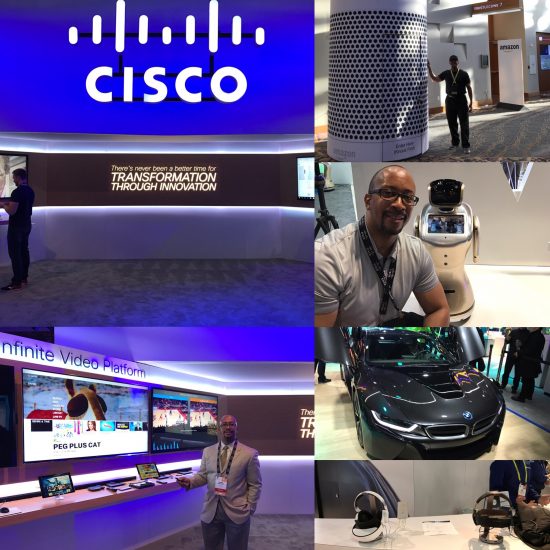Of course, I’m talking about that incredible annual event known as CES. For those of us who are passionate about technology impacting the Consumer Electronics space, CES is magical…and this year’s show did not disappoint. From the continued emergence of intelligent personal assistants, to the potential future impact of self-driving vehicles, CES 2017 let us examine what innovations in technology will mean for our industries…and to the world. Here are a few highlights:

The “Age of Alexa” has arrived:
Intelligent personal assistants, leveraging voice commands, continue to increase in popularity… and everyone wants to take advantage. Amazon appears to have captured significant mindshare, offering multiple options for integrating Alexa (Amazon’s voice-based personal assistant) into existing and emerging technology. While they haven’t released specific numbers, analysts estimate that Amazon has shipped more than 10 million Alexa-enabled Echo and Echo Dot devices. Apple certainly has a commanding lead with more than 1 billion devices using Siri, but Amazon is making it easy for Alexa to work outside its own ecosystem. Multiple vendors demonstrated Alexa powering items from automobiles to automatons (robots), and controlling appliances ranging from vacuum cleaners to refrigerators. Consider the potential impact that will have on Amazon’s leverage of big data…and how every voice-based search means that people are not using traditional browser/app-based search. While privacy concerns are always an issue, and the use of personal information is uncertain (it will rely on user opt-in), there is no doubt that voice-based, automated personal assistants are gaining traction. Thus, it’s easy to see why Google (Google Assistant/Google Home) and Microsoft (Cortana) are working so hard to catch up.
We’re being “driven” to even greater heights:
The race towards self-driving vehicles will generate a tremendous amount of additional bandwidth usage. Vehicle cameras and geo-positioning technologies will rely on low latency systems, and leverage hybrid-cloud environments, along with 5G mobile networks, to truly transform connected cities and the way people commute. We met with teams from Intel (which showcased the self-driving concept, featuring the beautiful BMW i8), and Qualcomm. Both companies highlighted the additional processing requirements that are driving innovations for next-generation chipsets… and both are forecasting that self-driving vehicles will “drive” significant increases in the use of mobile broadband and cloud.
It’s virtually time to begin augmenting our reality:
There are numerous companies experimenting in the enablement and delivery of virtual and augmented experiences. We saw virtual theaters delivered to stand-alone headsets…and advanced applications designed to leverage mobile phones in integrated VR headsets. However, while there was a fair amount of buzz around VR and AR experiences, we did not see anything that seemed to significantly move the needle forward. There continue to be advances related to both the medical industry and training applications…along with next-gen entertainment and gaming experiences (check out what HoloLamp is doing with AR image projection and manipulation via a PS4 controller). But, outside of gaming, VR and AR still do not appear ready for mass consumption, as monetization models were widely discussed…but no consensus has been reached.
There’s never been a better time for transformation through innovation:
Seeing the various technologies at this year’s CES makes me even more excited about Cisco’s portfolio. During the show, via our Infinite Video Platform (IVP), we demonstrated how we’ve been working with various partners to make voice search ubiquitous for navigating entertainment options. Additionally, by leveraging network intelligence, analytics, integrated third-party recommendations and partner developed chatbots, we showcased how our customers can position compelling video content…and how easily their subscribers can discover it. We highlighted how our holistic, end-to-end security solutions are designed to protect the entire enterprise, from the data center, through the core of the network, to the video content being streamed to consumers. We launched IVP Labs, which allows participating customers to test new features with users, before making them generally available…and thus enable faster innovation at a much lower cost. In the field of IoT, it is noteworthy that Hyundai announced their collaboration with Cisco, around the future of connected vehicles. Our hybrid-cloud strategy offers companies the freedom to choose the best environments and consumption models for their traditional and new cloud-native applications. And, of course, helping customers manage an ever-growing need for additional bandwidth is at the core of the value we bring to the market. Overall, CES provided a great start to 2017, and we’re anxiously looking forward to the opportunities the new year will bring.
You can learn more about Cisco’s Infinite Video Platform through our press release and IVP page. Feel free to reach out via social media, with questions or comments about any of the technology that Cisco showcased in Las Vegas. And, I invite you to share your own thoughts about interesting technology introduced and/or demonstrated at this year’s CES. As always, the show was far too large for me to see everything, myself.

Thanks for all the great insight Daren!
Awesome Post Daren, wish I could have attended!